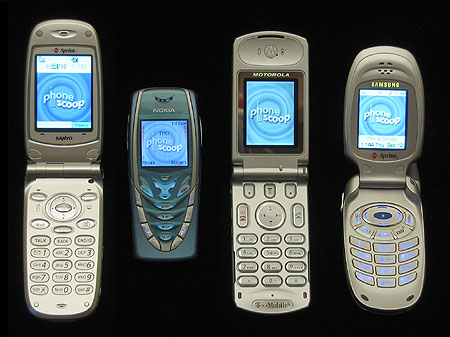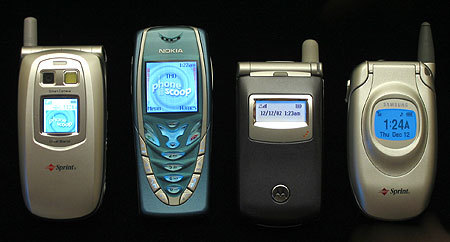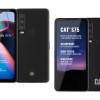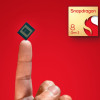Camera Phone Shoot-Out
Dec 18, 2002, 7:00 PM by Rich Brome @rbrome.bsky.social
A comparative review of the first camera phones and wireless photo services in the U.S.
Camera phones are quite possibly this season's hottest new gadget.
Like many mobile-technology trends, camera phones originated in Japan, and are now hitting the western world about a year later. While many manufacturers and carriers had camera-phone plans prior to 2002, the revolution didn't really ignite until Japanese carrier J-Phone bet big on camera phones in the first half of the year, and immediately saw its sales (and profits) soar. Almost overnight, manufacturers and carriers around the world took note of J-Phone's success, and started or accelerated their own camera-phone plans.
One common question about camera phones is "why do I need one?" The fact is, many people said the same thing about cell phones when they were first introduced. But once they used one, most people realized how useful it could be, and they quickly became ubiquitous and indispensable. Given the clear success of wireless voice, it certainly seems possible that wireless pictures could also be very successful. If the success of camera phones in Japan is any indication, camera phones could quickly become the new communication tool of choice.
Generally, the idea is that you'll find more occasions to take pictures simply because you have your phone with you more often than you probably carry a camera. Having a camera phone really changes the entire meaning of "taking pictures". Most people only take pictures on special occasions. This is mostly due to the inconvenience of carrying a camera, and the hassle and expense of developing film. Digital cameras eliminate the film hassle, but camera phones really take the revolution much further, by allowing you to have a camera on you at all times, and share the photos instantly. In short, it makes visual communication an everyday thing, which is a pretty big paradigm shift when you think about it.
So what are some scenarios where you might actually want to take a picture with your phone? There are a lot of different ways, and different people will surely find very different uses. In my two weeks carrying these four camera phones around, I found several occasions where I was glad I had them.

For example, I was at a home-improvement store the other day, and noticed a very tiny door (less than three feet tall) with the name "Chuck" written in marker above it. It was probably used for some kind of workshop or demo event at the store, but I thought it was amusing because I have a friend named Chuck who happens to be very tall. So I took a picture with one of the phones, and was able to e-mail it to some of my friends.
On the way home, we drove past a billboard that I had seen a week earlier, and had tried describing to someone over the phone just a few days earlier. I realized the billboard was coming up, and I took out one of my phones and snapped a picture as we drove past. (Someone else was driving!) It actually came out pretty well, and I was able to email that picture and show the person what I had tried to describe before. It was definitely a case of "a picture is worth a thousand words". I'm sure I used way more than a thousand words trying to describe it; if only I had a camera phone on me the first time!
Another useful scenario might be at a store. Since it's that season, imagine for moment that you are gift-shopping. You see something you think someone might like, but you're not sure. So you take a picture and send it to a mutual friend, then call that friend and ask "do you think John would like this?"
Finally, I think there could be a lot of uses for people in creative fields, or anyone who frequently looks around for inspiration and new ideas. I think it would be pretty useful to be able to just snap a picture any time you see something that catches your eye or gives you an idea. And then you could keep it for yourself, or send it to a co-worker and say something like "how about this pattern for the new web page background?"
So now with the general concept and a few examples covered, the rest of this article will explore and compare the first camera phones available in the U.S., and the services that go with them. Since the concept and technology is so new, (and also because some of it was rushed to market to catch the trend,) there are several very different types of camera phone solutions.

To provide a good overview, I chose four different phones, each with a different style of camera. Each is from a different manufacturer. The four phones I tested were the Sanyo 5300, Nokia 7210, Motorola T720i, and Samsung SPH-A500. I also wanted to include different price ranges, but the only really inexpensive camera phone - the Sony Ericsson T300 - was unfortunately not available for review from either Sony Ericsson or T-Mobile.

Of the six national carriers, so far only Sprint PCS and T-Mobile have launched serious efforts to sell and promote camera phones. Two of the phones I tested were from Sprint PCS, while the other two had T-Mobile service. Sprint PCS has a proprietary picture service, while T-Mobile uses the industry-standard MMS.


 iPhone 15 Series Goes All-In on USB-C and Dynamic Island
iPhone 15 Series Goes All-In on USB-C and Dynamic Island
 Bullitt Announces First Phones with Satellite Messaging
Bullitt Announces First Phones with Satellite Messaging
 Google "Accidentally" Posts a Photo of the Unannounced Pixel 8 Pro
Google "Accidentally" Posts a Photo of the Unannounced Pixel 8 Pro
 Snapdragon 8 Gen 3 Can Run Generative AI Voice Assistant On-Device
Snapdragon 8 Gen 3 Can Run Generative AI Voice Assistant On-Device
 AI Tools Coming to All Google Photos Users
AI Tools Coming to All Google Photos Users

